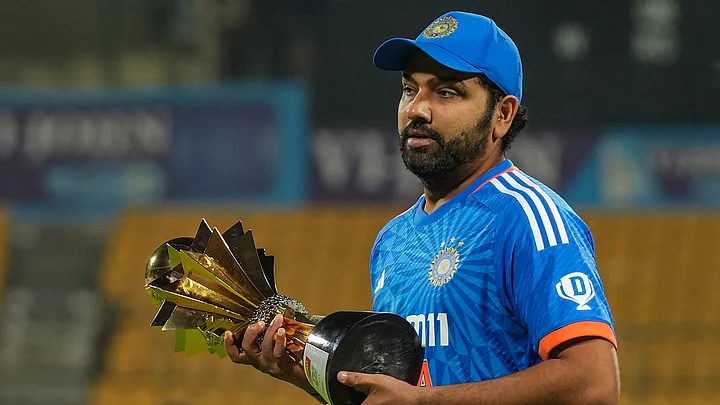Indian skipper Rohit Sharma on Wednesday scored a scintillating century as he notched up 121* runs off 69 deliveries against Afghanistan in the 3rd and final T20I at the M Chinnaswamy Stadium in Bengaluru. However, the match took an intriguing turn when, following a tie, two super overs were played to determine the winner.
Remarkably, Rohit made history by becoming the first Indian batter to bat three times in an international match. However, just before the final ball of the first super over, where India needed two runs to win, Rohit opted to retire himself out, introducing Rinku Singh as the non-striker. Subsequently, in the second super over, Rohit returned to the crease alongside Rinku Singh.
This decision by the Indian captain has sparked a debate about Rohit's eligibility to bat again. Currently, there is uncertainty regarding whether Rohit retired hurt or retired out, and the umpires are yet to provide clarification.
Notably, if Rohit was 'retired hurt,' he is considered "retired not out" and can bat again. However, if he was 'retired out,' he would not have been eligible to come out to bat for the second time.
Let’s take a look at what the MCC playing conditions say about batting in Super Overs?
25.4.2 – If a batter retires because of illness, injury or any other unavoidable cause, that batter is entitled to resume his/her innings. If for any reason this does not happen, that batter is to be recorded as ‘Retired – not out’.
25.4.3 – If a batter retires for any reason other than as in 25.4.2, the innings of that batter may be resumed only with the consent of the opposing captain. If for any reason his/her innings is not resumed, that batter is to be recorded as ‘Retired – out’.
Per the ICC Playing Conditions in case of a tied super over, “Any batsman dismissed in any previous Super Over shall be ineligible to bat in any subsequent Super Over.”
(At The Quint, we question everything. Play an active role in shaping our journalism by becoming a member today.)
